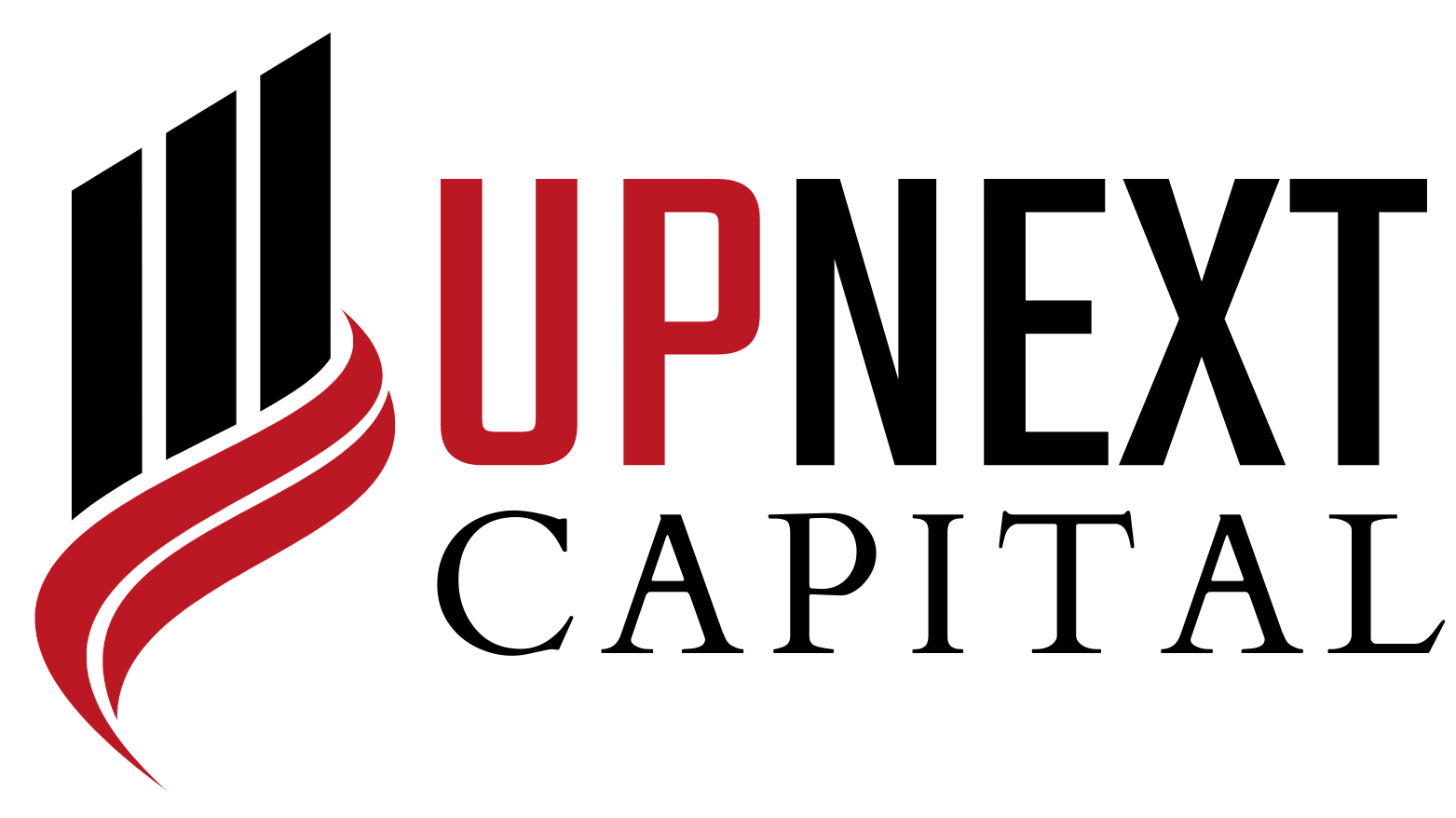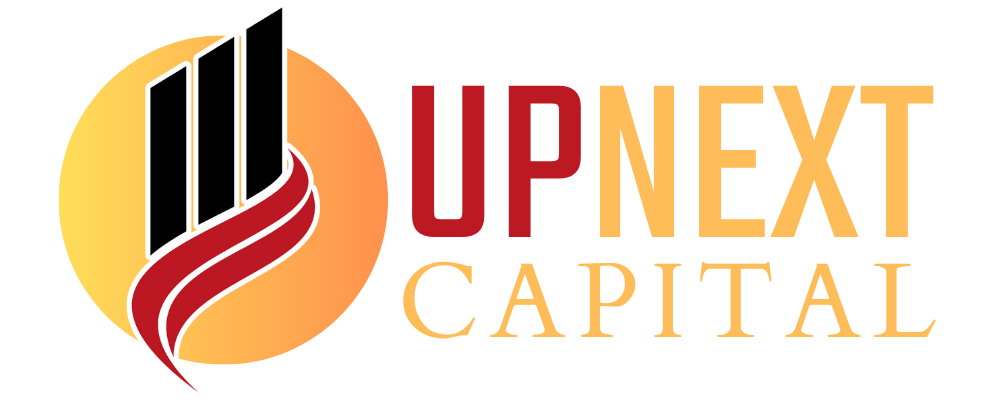- Home
- Mortgage Glossary
Mortgage Glossary
UPNEXT Capital Mortgage Glossary for Real Estate Investors
This comprehensive glossary is designed for real estate investors, particularly those focusing on commercial and investment properties, to clarify key mortgage and real estate terms. It includes reimagined terms from the provided document and additional terms relevant to investors navigating complex deals with UPNEXT Capital, with an expanded set of terms to cover more nuances of real estate investing.
Absorption Rate
The rate at which available properties in a market are sold or leased over a specific period, expressed as a percentage. Investors use this to assess market demand and set competitive pricing.
Acceleration Clause
A loan provision allowing the lender to demand immediate repayment of the outstanding balance if conditions like missed payments or unauthorized property sales occur.
Accessory Dwelling Unit (ADU)
A secondary residential unit on a property, such as a basement apartment or backyard cottage, often used to generate additional rental income.
Accretion
The gradual increase in land size due to natural processes, like sediment buildup along a river, potentially enhancing a property’s value.
Acre
A land measurement unit equal to 43,560 square feet, widely used in commercial, rural, and development transactions.
Actual Age
The chronological age of a building since its construction, contrasted with Effective Age, which accounts for condition and renovations.
Adjustable-Rate Mortgage (ARM)
A mortgage with an interest rate that adjusts periodically based on an index (e.g., LIBOR or prime rate), often used for short-term investment strategies.
Adjusted Basis
The original cost of a property plus capital improvements, minus depreciation, used to calculate capital gains tax upon sale.
Ad Valorem Tax
A tax based on the assessed value of a property, a key expense for investors planning long-term holding costs.
After Repair Value (ARV)
The estimated market value of a property after renovations, critical for fix-and-flip investors to determine potential profit margins.
Amortization
The gradual repayment of a loan through regular payments covering both principal and interest, typically over 15 or 30 years.
Amortization Schedule
A table detailing each loan payment, showing the split between principal and interest over the loan term.
Annual Percentage Rate (APR)
The total annual cost of a loan, including interest and fees, expressed as a percentage, enabling investors to compare financing options.
Appraisal
A professional estimate of a property’s market value by a licensed appraiser, essential for securing loans and determining investment viability.
Appraised Value
The fair market value of a property as determined by an appraiser, influencing loan-to-value ratios and financing terms.
Appreciation
The increase in a property’s value over time due to market trends, a primary goal for buy-and-hold investors.
Arm’s Length Transaction
A transaction between unrelated parties with no conflicts of interest, ensuring the price reflects true market value.
Assessed Value
The value assigned to a property by a tax assessor for property tax purposes, which may differ from its market value.
Assumable Mortgage
A mortgage that a buyer can take over from the seller, potentially beneficial in high-interest-rate markets.
Balloon Mortgage
A loan with lower initial payments and a large final payment due at term’s end, often used for short-term commercial financing.
Basis Point
One-hundredth of a percentage point (0.01%), used to describe small changes in interest rates or loan fees.
Bridge Loan
A short-term loan to bridge financing gaps, such as purchasing a new property before selling an existing one, common in time-sensitive deals.
Broker Price Opinion (BPO)
A property valuation by a real estate broker, used as a quicker, less costly alternative to an appraisal in certain financing scenarios.
Building Code
Local regulations ensuring construction safety and compliance, impacting renovation costs and project feasibility.
Buy and Hold
An investment strategy where a property is purchased to rent out for steady income and long-term appreciation.
Capital Expenditure (CapEx)
Funds spent on major property upgrades (e.g., roof replacement) to enhance value or extend useful life.
Capitalization Rate (Cap Rate)
The annual net operating income divided by the property’s purchase price, expressed as a percentage, used to evaluate investment returns.
Cash Flow
The net income a property generates after all expenses, a critical metric for rental property investors.
Cash-Out Refinance
Refinancing a mortgage for more than the current balance to access equity as cash, often used to fund additional investments.
Certificate of Occupancy
A municipal document confirming a building is safe for occupancy, required before leasing or selling a property.
Chain of Title
The historical record of a property’s ownership, verified during a title search to ensure clear title.
Clear Title
A property title free of liens, encumbrances, or disputes, essential for seamless transactions.
Closing Costs
Fees incurred during a real estate transaction, such as appraisal, title insurance, and legal fees, typically 2–5% of the loan amount.
Collateral
The property securing a loan, which the lender can seize if the borrower defaults.
Commercial Property
Real estate used for business purposes, such as offices, retail, or industrial spaces, often requiring specialized financing.
Common Area Maintenance (CAM)
Fees charged to commercial tenants to cover shared expenses like parking lot upkeep or snow removal.
Comparable Sales (Comps)
Recent sales of similar properties used to estimate a property’s value during appraisals or BPOs.
Contingency
A condition in a contract that must be met for the deal to proceed, such as financing approval or satisfactory inspections.
Conventional Mortgage
A mortgage not insured by a government agency, often requiring higher credit scores and down payments.
Cost Approach
A valuation method estimating a property’s value based on the cost to rebuild it, minus depreciation, plus land value, used for unique properties.
Covenant
A promise in a mortgage agreement (e.g., maintaining insurance) that, if breached, may trigger default or foreclosure.
Debt Service
The total principal and interest payments required to service a loan, a key factor in investment cash flow planning.
Debt Service Coverage Ratio (DSCR)
The ratio of a property’s net operating income to its debt payments, used by lenders to assess loan eligibility (e.g., 1.1–1.25).
Deed
A legal document transferring property ownership, recorded with the local government.
Default
Failure to meet loan obligations, potentially leading to foreclosure or lender remedies.
Deferred Maintenance
Postponed repairs or upkeep, often reducing a property’s value or requiring significant investment to restore.
Depreciation
A tax deduction for the gradual loss of a property’s value, used by investors to offset rental income.
Discount Points
Fees paid upfront to lower a mortgage’s interest rate, calculated as a percentage of the loan amount (1 point = 1%).
Down Payment
The initial cash payment toward a property’s purchase price, typically 0–25% for investment loans.
Due Diligence
The investigation of a property’s financial, legal, and physical condition before purchase, crucial for risk mitigation.
Earnest Money Deposit
A deposit by a buyer to show commitment to a purchase, held in escrow and applied to closing costs or forfeited if the deal fails.
Easement
A legal right for a non-owner to use part of a property (e.g., utility access), potentially affecting its value or use.
Economic Obsolescence
A loss in property value due to external factors, such as declining neighborhood conditions or zoning changes.
Effective Gross Income (EGI)
A property’s total rental income minus vacancy and credit losses, used in financial analysis.
Eminent Domain
The government’s authority to seize private property for public use, compensating the owner, which may disrupt investment plans.
Encumbrance
Any claim or restriction on a property, such as liens or easements, complicating financing or sale.
Equity
The difference between a property’s market value and outstanding loan balances, representing the investor’s stake.
Escrow
A third-party account holding funds (e.g., taxes, insurance, or earnest money) until transaction conditions are met.
Fair Market Value
The price a property would fetch in an open market between a willing buyer and seller, guiding appraisals and negotiations.
Fee Simple
The most complete form of property ownership, free of restrictions, preferred by investors for maximum control.
Fixed-Rate Mortgage (FRM)
A mortgage with a consistent interest rate throughout the term, offering stability for long-term investors.
Flip
An investment strategy involving purchasing a property, renovating it, and selling it quickly for a profit.
Foreclosure
The process where a lender seizes and sells a property due to the borrower’s failure to repay the loan.
Gross Lease
A lease where the landlord covers operating expenses (e.g., taxes, insurance), common in residential rentals.
Gross Rent Multiplier (GRM)
A property’s purchase price divided by its annual gross rental income, used to compare investment opportunities.
Ground Lease
A long-term lease of land where the tenant owns improvements but not the land, common in commercial developments.
Hard Money Loan
A short-term, asset-based loan with higher interest rates, used for quick financing or distressed properties.
Highest and Best Use
The most profitable, legally permissible, and physically possible use of a property, guiding investment and development decisions.
Holding Period
The time an investor owns a property, affecting tax implications (e.g., capital gains) and strategy.
Homeowner’s Association (HOA)
An organization managing common areas and enforcing rules in a development, adding costs for investors.
Income Approach
A valuation method estimating a property’s value based on its income potential, critical for commercial properties.
Interest-Only Loan
A loan where payments cover only interest for a period, lowering initial cash flow demands for investors.
Investment Property
Real estate purchased to generate income through rents or appreciation, such as multifamily or commercial buildings.
Joint Venture (JV)
A partnership where two or more parties pool resources to invest in a property, sharing profits and risks.
Leasehold Estate
A property interest where the tenant holds a long-term lease rather than ownership, common in commercial real estate.
Letter of Intent (LOI)
A non-binding document outlining proposed terms for a real estate deal, used to initiate negotiations.
Lien
A legal claim against a property for unpaid debts, which must be cleared before selling or refinancing.
Liquidity Reserves
Cash or liquid assets required by lenders (e.g., 5–15% of loan amount) to ensure investors can cover project contingencies.
Loan-to-Cost (LTC)
The ratio of a loan amount to the total project cost (purchase plus renovations), used in construction and rehab financing.
Loan-to-Value Ratio (LTV)
The ratio of a loan amount to the property’s appraised value, influencing lender risk and loan terms.
Market Analysis
A study of local real estate trends (supply, demand, pricing) to inform investment decisions and strategy.
Mezzanine Financing
A hybrid loan secured by a property’s equity, subordinate to the primary mortgage, used to bridge funding gaps in commercial deals.
Mortgage
A loan secured by real property, repaid through regular principal and interest payments.
Mortgage Broker
A professional connecting borrowers with lenders, offering access to diverse loan options for investors.
Net Lease
A lease where the tenant pays some or all operating expenses (e.g., taxes, insurance), common in commercial properties.
Net Operating Income (NOI)
A property’s annual income after operating expenses but before debt service, a key metric for commercial investors.
Non-Conforming Loan
A mortgage exceeding Fannie Mae or Freddie Mac limits, often used for high-value commercial or investment properties.
Non-Recourse Loan
A loan where the lender’s recourse is limited to the property, protecting the borrower’s personal assets in case of default.
Occupancy Rate
The percentage of leased units in a property, impacting cash flow and investment performance.
Origination Fee
A lender’s fee for processing a loan, typically 1–2% of the loan amount, affecting investor costs.
Owner Financing
A transaction where the seller provides financing to the buyer, often with flexible terms for investors.
Private Mortgage Insurance (PMI)
Insurance required for conventional loans with less than 20% down, increasing costs for investors.
Pro Forma
A financial projection of a property’s income, expenses, and cash flow, used to evaluate investment potential.
Purchase Agreement
A contract detailing the terms of a property sale, including price, contingencies, and closing date.
Quitclaim Deed
A deed transferring any ownership interest a party may have, often used to resolve title issues.
Rate Lock
An agreement securing a specific interest rate for a period, protecting investors from rate increases during closing.
Real Estate Investment Trust (REIT)
A company that owns or finances income-producing real estate, allowing investors to gain exposure without direct ownership.
Recourse Loan
A loan where the lender can pursue the borrower’s personal assets beyond the collateral if the loan defaults.
Refinance
Replacing an existing loan with a new one to secure better terms, extend repayment, or access equity.
Return on Investment (ROI)
The profit or loss from an investment, expressed as a percentage, calculated as net gain divided by cost.
Sales Comparison Approach
A valuation method comparing a property to recently sold similar properties, used in residential and commercial appraisals.
Second Mortgage
A subordinate loan secured by a property’s equity, often used for renovations or additional investments.
Section 1031 Exchange
A tax-deferred exchange allowing investors to swap like-kind properties without immediate capital gains tax.
Soft Costs
Non-construction expenses in a development project, such as permits, legal fees, or architectural plans.
Subordination Agreement
A contract prioritizing one loan over another, often used in second mortgages or mezzanine financing.
Sweat Equity
Value added to a property through the owner’s labor, such as renovations, reducing cash investment.
Tenancy in Common (TIC)
A co-ownership structure where multiple parties hold undivided interests in a property, common in investment partnerships.
Title Insurance
A policy protecting against losses from title defects or disputes, ensuring clear ownership.
Transactional Funding
Short-term financing for double closings, enabling investors to complete a purchase and sale simultaneously.
Triple Net (NNN) Lease
A commercial lease where the tenant pays all operating expenses (taxes, insurance, maintenance), minimizing landlord costs.
Underwriting
The lender’s process of evaluating a borrower’s creditworthiness and a property’s value to approve a loan.
Vacancy Rate
The percentage of unoccupied rental units in a property or market, affecting cash flow projections.
Value-Add Investment
A strategy where investors purchase underperforming properties, improve them, and increase income or value.
Variance
A municipal approval allowing a property to deviate from zoning regulations, enabling unique investment opportunities.
Walk-Through Inspection
A final inspection before closing to verify a property’s condition and ensure agreed-upon repairs are completed.
Wholesale
An investment strategy where a property is purchased at a discount and quickly resold for a profit, often without improvements.
Yield
The annual return on an investment, considering income and appreciation, expressed as a percentage.
Zoning
Municipal regulations dictating permissible property uses (e.g., residential, commercial), impacting investment potential.


